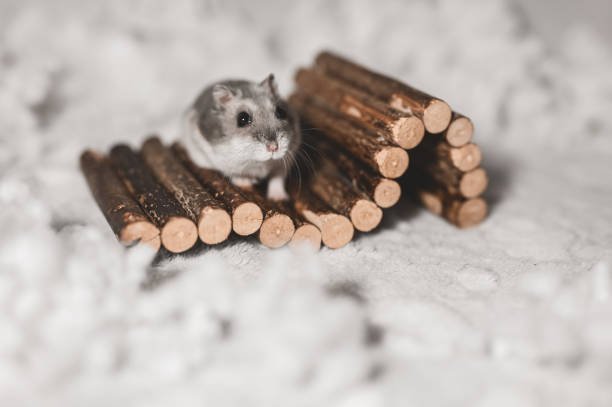Best Hamster Cage Setup: A Complete Guide for a Safe, Cozy & Happy Habitat
This post contains affiliate links. This means I will make a commission at no extra cost to you should you click through and make a purchase. Read the full disclosure here.Creating a home for your hamster is more than just putting together a cage—it’s about designing a whole little world where your tiny pet can burrow, explore, snack, nap, and feel safe.
As someone who loves small spaces, cozy corners, and calm living, I know how important it is for a pet’s home to blend with your lifestyle and support their well-being.
In this guide, I’ll walk you through the best hamster cage setup, from choosing the right cage to the must-have accessories that keep your hamster happy, healthy, and stress-free. Whether you’re a busy mom, a pet-loving minimalist, or someone starting small, this setup guide is perfect for you.
Step 1: Choose the Right Cage (Go Bigger Than You Think)
Many first-time hamster owners accidentally choose a cage that’s too small—especially the ones marketed as “starter kits” at big-box pet stores. These can cause boredom, stress, and even health issues.
The ideal size:
- Minimum of 450 square inches of continuous floor space
- 600+ square inches recommended for Syrians
- Deep base for burrowing (at least 6–10 inches)
Top cage options:
- Niteangel Vista Enclosure – beautiful, modern, easy to customize
- Prevue 528 Small Animal Home – affordable and large enough
- IKEA Detolf DIY conversion – spacious and budget-friendly
- 40-gallon breeder tank – secure, escape-proof, and great visibility
Tip: Measure floor space, not just cage dimensions. The bigger the floor, the better the life!
Step 2: Add Proper Bedding (Deep, Natural & Cozy)

Hamsters are burrowers by nature. Bedding isn’t just for hygiene—it’s part of their emotional well-being. Shallow bedding makes them feel exposed and anxious.
Use:
- 6–10 inches of bedding
- Mix soft paper bedding (like Kaytee Clean & Cozy or Carefresh) with aspen shavings for structure
- Add dried moss or hay on top for texture and foraging fun
Avoid:
- Fluffy cotton bedding (can cause blockages or tangles)
- Pine or cedar shavings (toxic oils)
Think of their bedding as a soft underground playground. Go deep, go natural, go safe.
Step 3: Include a Solid-Surface Wheel
Hamsters need to run—and they will run miles each night. A proper wheel prevents obesity and satisfies their natural drive to move.
Wheel guidelines:
- 8–9 inches for dwarf hamsters
- 10–12 inches for Syrian hamsters
- Must be solid surface, not mesh or barred
- Should be quiet, especially if it’s near a bedroom
Recommended wheels:
- Niteangel Silent Wheel
- Wooden Trixie Wheel
- Kaytee Comfort Wheel (in the right size)
A good wheel = a happy, active hamster.
Step 4: Add Hides, Chews & Natural Enrichment
A hamster’s world should be more than just food and a wheel.
They need:
- Hideouts to feel safe (at least 2–3 in different corners)
- Chew toys for dental health (apple sticks, loofah, wood)
- Tunnels and bridges for exploring
- Sand bath for cleaning and coat health (use chinchilla sand)
Ideas:
- Coconut hideout
- Cork log or wood tunnels
- Cardboard mazes or DIY egg carton puzzles
- Foraging toys like scatter feed mats or shredded paper bowls
Natural textures like wood, hay, and moss add stimulation and blend into your home beautifully.
Step 5: Set Up Feeding & Water Stations
Feeding can be as simple or creative as you like.
Essentials:
- Heavy ceramic bowl (less likely to tip)
- Water bottle attached securely to the side
- Optional: open water dish for monitored use
Feeding tip:
- Try scatter feeding (sprinkle dry mix around cage) to mimic natural foraging
- Offer fresh veggies 2–3x a week (like cucumber, carrots, spinach)
Feeding time is also bonding time—use it to talk gently and let your hamster get used to your presence.
Step 6: Place the Cage in the Right Spot
Even the best cage setup won’t help if your hamster feels scared or overstimulated all the time.
Best placement:
- Quiet room, away from heavy foot traffic
- Dimly lit, not in direct sunlight
- Away from heating vents, windows, or loud electronics
- Low surfaces are best—hamsters don’t like to feel exposed
Bedrooms can work beautifully—just prepare for a bit of nighttime wheel-running!
Step 7: Keep It Clean (But Not Too Clean!)
Cages don’t need to be deep-cleaned weekly. In fact, too much cleaning can stress your hamster by removing familiar scents.
Cleaning routine:
- Spot clean pee areas every 2–3 days
- Deep clean the entire cage every 3–4 weeks
- Use white vinegar + water (avoid scented cleaners)
- Always keep some old bedding and hideouts to preserve scent
Clean means fresh, not sterile.
Final Thoughts
Creating the best hamster cage setup isn’t about buying the fanciest accessories. It’s about giving your tiny companion a space where they feel secure, free to explore, and close to nature—even in the middle of your cozy home.
Whether you’re designing a cage for your child’s first pet or building a natural setup in your quiet apartment corner, this step-by-step guide will help you get it right—from the floor up.
Because your hamster may be small—but their world should feel big.














